I ran a workshop on “Exploring the Kanban Universe” at Agile2010 with Xavier Quesada Allue. The premise was to setup an example case study and lead participants through visualising different aspects of a project – the different multiverses – over a number of iterations. Below are pictures of the final boards from the different teams. We encouraged people to think ‘outside the box’ and try and move away from traditional rows and columns approaches.
The highlight for me was the circular design that one of the teams came up with. I thought it was a great solution to the challenge of avoiding kanban boards appearing to show a linear process. With a circular design, a work item can loop round the circle multiple times, with the distance from the centre indicating closeness to completion, and different quadrants indicating the primary focus of work such as analysis, dev, test etc. This was the nicest example of a board as a ‘map’ as opposed to a ‘relational’ representation.
One thing that was reinforced for me was that a Kanban Board should not try to visualise absolutely everything. Its should have just enough information to signal where the issues are, and where the team should look to find out more. In other words it should be able to “point to the gemba”. Thanks to Harada Kiro to reminding me of this after the session. In future runs of the workshop we’d like to try starting with a blank canvas each iteration to avoid teams feeling constrained by trying to show too much and having to build upon previous designs.
I also gave a talk on the subject at the Lean & Kanban Conference in Belgium last week after which Mary Poppendieck pointed out that I’d slipped into referring to some visual management designs as kanban boards when they strictly weren’t because they didn’t limit WIP. Visual Management is a large part of a Kanban System, but not every Visual Management board is a Kanban board.

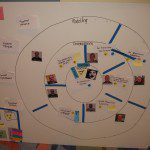
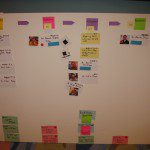

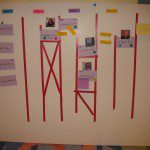
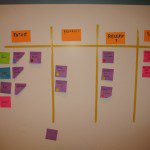

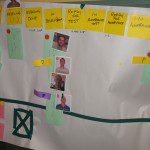
The diagrams look interesting, but I’m totally baffled by them. I hope they can be redone with examples that make sense. Ancient monuments as task cards are bewildering me.